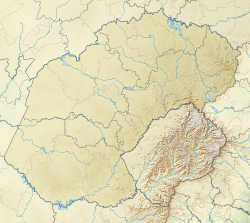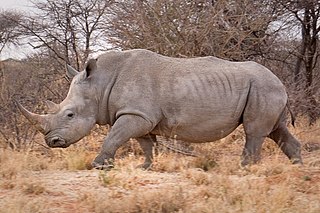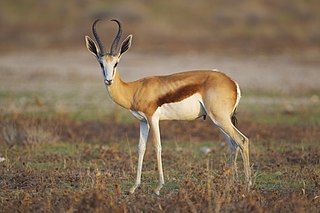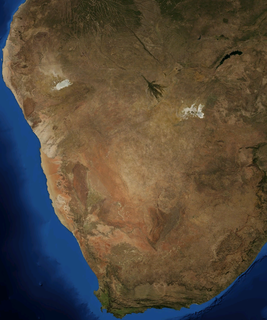
The Kalahari Desert is a large semi-arid sandy savanna in Southern Africa extending for 900,000 square kilometres (350,000 sq mi), covering much of Botswana, parts of Namibia and regions of South Africa.

Pretoria is the administrative capital of South Africa. It straddles the Apies River and has spread eastwards into the foothills of the Magaliesberg mountains. It is one of the country's three capital cities, serving as the seat of the administrative branch of government, and of foreign embassies to South Africa. Pretoria has a reputation for being an academic city with three universities, the Tshwane University of Technology (TUT), University of Pretoria (UP), and the University of South Africa (UNISA), also home to the Council for Scientific and Industrial Research (CSIR), and the Human Sciences Research Council. The city also hosts the National Research Foundation and the South African Bureau of Standards making the city a hub for research. Pretoria is the central part of the Tshwane Metropolitan Municipality which was formed by the amalgamation of several former local authorities including Centurion and Soshanguve. There have been proposals to change the name of Pretoria itself to Tshwane and the proposed name change has caused some public controversy.
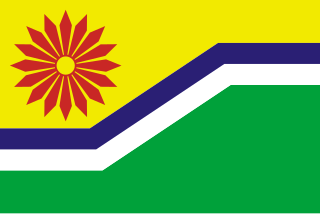
Mpumalanga is a province of South Africa. The name means "east", or literally "the place where the sun rises" in the Swazi, Xhosa, Ndebele and Zulu languages. Mpumalanga lies in eastern South Africa, bordering Eswatini and Mozambique. It constitutes 6.5% of South Africa's land area. It shares borders with the South African provinces of Limpopo to the north, Gauteng to the west, the Free State to the southwest, and KwaZulu-Natal to the south. The capital is Mbombela.

Andries Wilhelmus Jacobus Pretorius was a leader of the Boers who was instrumental in the creation of the South African Republic, as well as the earlier but short-lived Natalia Republic, in present-day South Africa. The large city of Pretoria, executive capital of South Africa, is named after him.

Senekal is a town situated on the banks of the Sand River in the eastern part of the Free State province of South Africa. It was named after Commandant FP Senekal. It is the second largest town in Setsoto Municipality after Ficksburg, the largest town and capital of Setsoto. Senekal lies on the N5 national road between Winburg on the west and Bethlehem to the east. It has two townships, Matwabeng and OR Tambo Section, the latter being the latest, largest and fastest growing.

The Highveld is the portion of the South African inland plateau which has an altitude above roughly 1500 m, but below 2100 m, thus excluding the Lesotho mountain regions to the south-east of the Highveld. It is home to some of the country's most important commercial farming areas, as well as its largest concentration of metropolitan centres, especially the Gauteng conurbation, which accommodates one-third of South Africa's population.
The following lists events that happened during 1863 in South Africa.

The Transvaalse Staatsartillerie / State Artillery is an artillery regiment of the South African Army. As a reserve unit, it has a status roughly equivalent to that of a British Army Reserve or United States Army National Guard unit. It is part of the South African Army Artillery Formation.
André Stefan Pretorius is a former South African rugby union footballer that played professionally between 1999 and 2014. His usual position was at fly-half. He has been capped by his country's national side, the Springboks and was a member of the 2007 Rugby World Cup squad that was crowned world champions.

SAS President Kruger was the first of three President-class Type 12 frigates built in the United Kingdom for the South African Navy (SAN) during the 1960s. The ship spent most of her career training and made visits to foreign ports in Africa, Western Europe and the United States. In the late 1960s, she was modernized and equipped to operate a helicopter. In the mid-1970s, President Kruger played a minor role in the South African Border War, conducting patrol operations off the Angolan coast. The ship was placed in reserve in 1977, but was recommissioned in 1980. She sank in 1982 with the loss of 16 lives after colliding with her replenishment oiler, SAS Tafelberg, in the South Atlantic.
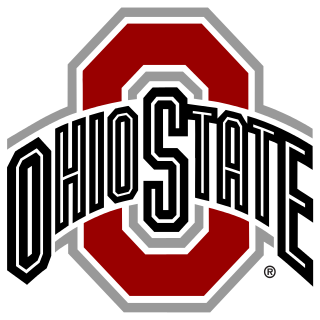
The 2008 Ohio State Buckeyes football team represented the Ohio State University during the 2008 NCAA Division I FBS football season. The Buckeyes were coached by Jim Tressel and played their home games in Ohio Stadium in Columbus, Ohio. They finished with a record of 10–3 and were Big Ten Conference co-champions.

The Kingdom of Zulu, sometimes referred to as the Zulu Empire or the Kingdom of Zululand, was a monarchy in Southern Africa that extended along the coast of the Indian Ocean from the Tugela River in the south to Pongola River in the north.

The Transvaal Civil War was a series of skirmishes during the early 1860s in the South African Republic, or Transvaal—in the area now comprising Gauteng, Limpopo, Mpumalanga, and North West provinces of South Africa. It began after the British government had recognized trekkers living in the Transvaal as independent in 1854. The Boers divided into numerous political factions. It only ended in 1864 when an armistice treaty was signed under a Karee tree south of the site of the later town of Brits.
The Allemanskraal Dam is a dam in the Free State province of South Africa, on the Sand River. It was established in 1960. The reservoir has a gross capacity of 174,500 cubic metres (6,160,000 cu ft), and a surface area of 26.481 square kilometres (10.224 sq mi), the dam wall is 38 metres (125 ft) high.
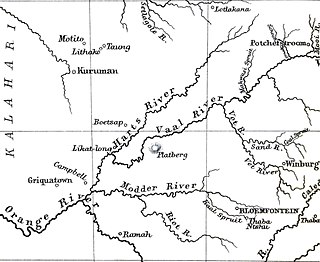
The Sand River is a river in the Free State, South Africa. It is located close to Welkom and Virginia in the gold mining center of the Free State. Its source is located close to Tweefontein NW of Ficksburg not far from the South Africa/Lesotho border, at 28°40′49″S27°41′23″E. This river is famous because of the historical Sand River Convention, an important event in South African history.

Hercules Commando was a light infantry regiment of the South African Army. It formed part of the South African Army Infantry Formation as well as the South African Territorial Reserve.

Regiment East Rand is a reserve infantry battalion of the South African Army. The unit was intended initially to be predominantly an Afrikaans speaking citizen force. As a reserve force unit, it has a status roughly equivalent to that of a British Army Reserve or United States Army National Guard unit.
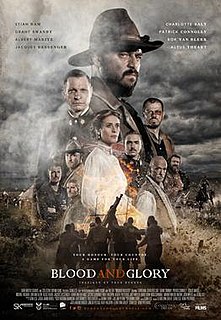
Blood and Glory is a feature film that was released to cinema in April 2016 in South Africa. The film, set during the Second Boer War in 1901, is a period drama that follows Willem Morkel, a Cape Rebel Boer/Afrikaans farmer who was captured and sent to a British prisoner of war camp on St. Helena Island in the Atlantic Ocean. Placed under terrible oppression and hardship, Morkel and his comrades slowly come together to assert their defiance, humanity and human spirit and, more specifically, through the game of rugby.
SAS President Pretorius was the last of three President-class Type 12 frigates built in the UK for the South African Navy (SAN) during the 1960s. The ship spent most of her career training and visited foreign ports in Africa and Australia. She had a lengthy modernisation during the 1970s and manpower shortages limited her activities after that was completed in 1977. President Pretorius was paid off in 1985 and was sold for scrap in 1992.




